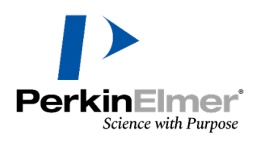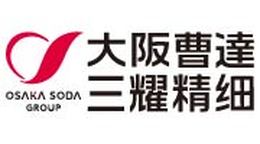方案详情文
智能文字提取功能测试中
DATE:10/15/2001Page 1 of 40Associazione Italiana AllevatoriLaboratorio Standard Latte REPORT ON THE FUNCTIONAL TESTS CARRIED OUT ON THEFOOD LAB INSTRUMENT During the period of July-October 2001, 2500 tests were carried out to verify theoperation of the FoodLab instrument supplied by CDR S.r.l. (Via degli Artigiani, 6-50020Ginestra F.na- FIRENZE Tel. +39 055871431 Fax+39 0558714322) for determining thepresence of urea in milk. The instrument is realized with spectrophotometric and microelectronic technology,with reading through solid-state devices and interferential filters. The instrument isportable (length 315 mm, width 190 mm, height 165 mm, weight 2500 gr.) and requires anormal 12 Vcc power supply outlet. The reading unit and the incubation unit (maximum 14reading cells) are thermostated at 37C. The system uses non-pretreated milk samplesand specific ready-to-use microcuvettes, with previously dispensed reagents and non-returnable (disposable) bottles. The reaction is based on the transformation of the urea into ammonia by theurease.The ammonia ions thus react with a phenolic derivative and form a blue-greencolored complex whose intensity, measured at 700nm, is directly proportional to theconcentration of urea in the sample. The reaction consists of a first phase of preheating ofreagent R1 with the sample (5ul) that lasts for 5 minutes and of a second phase where thereaction goes to end point after 3 minutes from when reagent R2 is added.The systemcan be standardized through the use of three or more milk standard samples. The tests were carried out in the Laboratorio Standard Latte (LSL) (Milk StandardLaboratory) of the Associazione Italiana Allevatori (A.I.A.) (Italian Breeders Association).The laboratory has been accredited since 1997 by Sinal with n°0138 for six tests in thedairy industry, among which the determination of urea with the differential pH-metryinstrument, EFA Instrument, Hamilton-Eurochem. Furthermore, the laboratory's qualitysystem is UNI EN ISO 9001. 94 certified for the preparation and commercialization ofreference material, reference material certified in the dairy industry and planning,organization and realization of inter-laboratory evaluation tests (1999). A Project Plan (PdP) has been drawn up at the Laboratorio Standard Latte (MilkStandard Laboratory) in which the description of the operative protocol is given. The tests were initially carried out for cow’s milk and subsequently extended tosheep's milk and buffalo milk. A 0.02% concentration of Technical Bronopol was added to the milk used suppliedby the Laboratorio Standard Latte (Milk Standard Laboratory). It is not possible to analyzemilk samples treated with Methylene Blue because the instrument measures in the blue-green spectrum. The milk, coming from both single animals and from mass samples, was onlyatedto make the matrix homogeneous and did not undergo further preventivetreatments. The functional tests carried out are: 1. Determination of the testing speed 2. Check of the temperature of each individual well 3. Repeatability tests 4.. Check of the instrument's calibration 5. Check of the instrument's linearity 6. Recovery and sensitivity tests 7. Check of the variation of the lots 8. Check for interference of the fat These tests from n°3 to n°8 were repeated several times over the time span for the cow’smilk and for the buffalo milk.The tests were repeated only once for the sheep’s milk,which is considered intermediate between the buffalo milk and the cow’s milk for themacrocomponents. 1. DETERMINATION OF THE TRUE TESTING SPEED The true speed of the instrument is 48 tests/hour. This value was obtained by testing14 samples at a time (maximum number of cuvettes for the instrument), keeping in mindthe operator's speed and the reaction times preset by the instrument (5 minutes for thereaction mediated by the urease that transforms the urea into ammonia and 3 minutes forthe colorimetric reaction). The measurements were taken after the instrument, which arrives at the standardtemperature after 10 minutes, was heated. The instrument’s nominal speed is 60 tests/hour. 2. CHECK OF THE TEMPERATURE OF EACH INDIVIDUAL WELL It was possible, using some empty cuvettes, to determine the temperature of eachindividual well, using a second line thermometer calibrated for comparison with a referencesample, Delta Ohm digital thermometer with PT100 probe calibrated at the Sit center n°20/M/E certificate n°1341. The cuvettes were filled with equal volumes of water (approximately 1 ml). Ten (10)measurements were taken on each individual well after the instrument was heated, after30 minutes, an hour and at the end of the workday (ten readings total). As shown in Table 1, the instrument maintains a temperature of 37°℃±0.4°℃ in eachindividual well. The instrument’s acceptability limit is 37°℃ ± 1. Table 1: Check of the temperature of the reading cells. Ten (10) measurements weretaken for each individual well. SD: Standard deviation from the mean vc: (variation coefficient) is the ratio between standard deviation and the mean ofthe measurements. READINGCELLS MEAN VALUES(n =10) SD VC MAX MIN 1 37.4 0.3 0.9 37.9 36.8 2 37.3 0.4 1.2 37.8 36.4 3 37.5 0.3 0.9 38.0 36.9 4 37.5 0.2 0.6 37.8 37.1 5 37.5 0.3 0.9 37.9 36.9 6 37.4 0.6 1.6 36.3 37.9 7 37.4 0.4 1.1 37.9 36.8 8 37.6 0.3 0.9 38.0 37.1 9 37.6 0.2 0.6 37.9 37.2 10 37.4 0.2 0.7 37.8 37.1 11 37.4 0.6 1.6 37.9 36.6 12 37.5 0.5 1.3 37.9 37.6 13 37.9 0.3 0.8 38.3 37.3 14 37.7 0.6 1.6 38.4 36.8 15 37.8 0.4 0.9 38.2 37.2 3. REPEATABILITY TESTS 10 REPETITIONS ON THE SAME SAMPLE Analyzingfive milk samples, 10 tests were carried out on each sample in 10different cuvettes. The total standard deviation (repeatability index), computed from the total deviationsfrom the means of all of the measurements obtained, is 0.67 mg/dl for the cow’s milk,0.74 mg/dl for the buffalo milk and 0.72 mg/dl for the sheep’s milk. Table 2a: Repeatability tests on five different samples of cow’s milk. The values givenare expressed in mg/dl. Readings Sample 1 Sample 2 Sample3 Sample 4 Sample 5 1 27.3 26.0 39.7 36.0 32.0 2 27.3 27.8 39.8 35.3 32.5 3 28.6 26.6 40.0 36.7 32.0 4 28.0 25.4 39.1 37.0 32.0 5 28.7 25.9 37.8 36.6 32.3 6 27.4 25.3 40.0 36.4 32.4 7 27.8 26.0 39.1 36.6 32.5 8 28.2 25.8 39.7 36.6 32.8 9 27.4 25.9 39.5 35.6 32.2 10 27.6 26.2 38.5 36.0 32.4 MEAN 27.83 26.09 39.32 36.28 32.31 SD± 0.53 0.70 0.71 0.54 0.26 vc% 1.89 2.7 1.81 1.48 0.82 MIN 27.30 25.30 37.80 35.30 32.2 MAX 28.70 27.80 40.00 37.00 32.8 Table 2b: Repeatability tests on five different samples of buffalo milk. The standarddeviation, derived from the deviations from the mean of all the values, is0.74 mg/dl Readings Sample 1 Sample 2 Sample 3 Sample 4 Sample 5 1 44.9 49.3 46.0 44.6 43.6 2 43.2 49.8 46.6 44.3 42.5 3 42.9 49.0 45.6 44.3 43.6 4 43.7 48.8 44.9 43.9 43.3 5 43.2 50.6 46.1 43.7 42.5 6 43.1 48.8 44.7 44.1 41.8 7 41.9 48.5 45.2 45.6 42.3 8 42.7 49.5 46.9 44.1 44.1 9 42.5 48.6 45.4 44.0 43.1 10 43.1 48.9 44.3 一 45.1 MEAN 43.12 49.18 45.57 44.29 43.19 SD± 0.79 0.64 0.84 0.56 0.97 vc% 1.83 1.31 1.83 1.25 2.25 MIN 41.90 48.50 44.30 43.70 41.80 MAX 44.90 50.60 46.90 45.60 45.10 Table 2c: Repeatability tests on five different samples of sheep’s milk. Samples 1 and 2 are mass samples; the others are singleanimal.The total standarddeviation is 0.72 mg/dl, obtained from the deviations of all of the values. Readings Sample 1 Sample 2 Sample 3 Sample 4 Sample 5 1 36.0 36.0 38.3 37.6 41.1 2 35.2 34.2 37.3 38.1 40.7 3 35.3 36.3 38.0 36.0 41.8 4 36.0 35.1 37.6 38.1 40.2 5 35.6 35.5 36.2 40.0 41.1 6 36.0 35.4 37.2 39.0 40.1 7 35.9 35.2 36.4 38.4 40.9 8 36.1 35.3 38.3 38.3 41.7 9 35.3 35.4 38.3 39.8 41.1 10 36.3 36.0 38.4 39.0 41.9 MEAN 35.77 35.44 37.60 38.43 41.06 SD± 0.39 0.59 0.81 1.15 0.62 vc% 1.09 1.66 2.16 2.98 1.52 MIN 35.20 34.20 36.20 36.00 40.10 MAX 36.30 36.30 38.40 40.00 41.90 ●10 REPETITIONS OF READING OF THE SAME CUVETTE After having added 5ul of milk, and after the 5 minutes of reaction had passed, 10readings of buffer R1 of the same cuvette were carried out.The second reagent (R2)was subsequently added and, after the 3 minutes of reaction time had passed, the 10readings of the sample were carried out. Thus it was possible to verify the instrument'sreading stability. The readings, carried out in triple testing, show that there is no variation on theinstrument’s part in the measurement of the samples. In fact, the excellentrepeatability of the data is highlighted by a standard deviation of the deviations from themean of all of the values of 0.1 mg/dl for the cow’s milk, 0.4 mg/dl for the buffalo milkand 0.15 mg/dl for the sheep’s milk. Table 3a: Reading tests on the same cuvette of a single sample of cow’s milk, testedthree times (1st test, 2 test and 3 test) to verify the instrument’s stability. Readings 1st test 2nd test 3rd test 1 29.6 30.8 29.8 2 29.5 30.5 29.7 3 29.5 30.6 29.8 4 29.4 30.3 29.7 5 29.5 30.5 29.5 6 29.5 30.5 30.0 7 29.5 30.2 29.9 8 29.6 30.6 30.0 9 29.4 30.5 29.8 10 29.5 30.4 29.7 MEAN 29.5 30.49 29.79 SD ± 0.067 0.166 0.152 vc% 0.225 0.545 0.511 MIN 29.40 30.20 29.50 MAX 29.60 30.80 30.00 Table 3b: Reading tests on the same cuvette of a single sample of buffalo milk, testedthree times (1st,2nd and 3tests). Readings 1st test 2nd test 3rd test 1 43.3 45.2 44.4 2 43.4 45.3 44.9 3 43.5 44.9 44.7 4 43.2 44.8 44.8 5 43.4 44.8 44.8 6 43.2 44.8 45.0 7 43.3 44.9 44.9 8 43.3 44.6 44.7 9 43.0 45.0 44.6 10 43.1 45.1 44.8 MEAN 43.27 44.94 44.76 SD± 0.15 0.21 0.17 vc% 0.35 0.47 0.38 MIN 43.50 45.30 45.00 MAX 43.00 44.60 44.40 Table 3c: Reading tests on the same cuvette of a single sample of sheep’s milk, testedthree times (1t, 2nd and 3dtests). Readings 1st test 2nd test 3rd test 1 38.8 41.2 36.0 2 38.7 41.1 36.0 3 38.6 41.1 36.0 4 38.7 40.9 35.3 5 38.5 40.9 35.8 6 38.7 40.9 35.8 7 38.9 41.1 35.7 8 38.8 40.8 35.8 9 38.4 41.0 35.8 10 38.6 40.8 35.9 MEAN 38.67 40.98 35.81 SD ± 0.15 0.14 0.21 vc% 0.39 0.34 0.58 MIN 38.40 40.80 35.30 MAX 38.90 41.20 36.00 VERIFICATION OF THE STABILITY TIME OF THE BUFFER AND OF THE COLOR The readings of the absorbance of buffer R1 (phenolic derivative that transformsurea into ammonia) were carried out from the moment in which the 5 ul of milk wereadded and after 5,10, 15, 20, 25, 30 and 40 minutes. Table 4: The mean values of the absorbance derived from 10 measurements, eachwith respect to the time expressed in minutes, are given. MINUTES ABSORBANCEn=10 0 84.7 5 84.9 10 84.0 15 81.8 20 81.6 25 84.1 30 84.0 40 82.2 Graph 1: Progress of the buffer stability curve. The time expressed in minutes is givenon the abscissas and the mean values of the absorbance on the ordinates. We can see from the graph that the curve remains constant from when the milksample is added until 15 minutes later, after which the absorbance values begin todecrease slightly. After having added the 5 ul of milk and having allowed the first 5-minute reaction,reagent R2 is added (alkaline solution that determines the colorimetric reaction) to thesample and we proceed directly to the reading of the color according to the previouslydescribed modalities. The zero time corresponds to the 3 minutes following the addition of R2 (reaction time in which the ammonia reacts with the alkaline solution,forming a green complex). Table 5: The mean values of the absorbance derived from 10 measurements each aregiven. The zero time corresponds to the end of the three-minute colorimetricreaction. MINUTES ABSORBANCE n= 10 0 770.1 5 775.9 10 771.0 15 767.2 20 767.2 25 763.8 30 760.0 40 755.7 Graph 2: Progress of the color stability curve. The zero time corresponds to the end ofthe colorimetric reaction. The mean values of the absorbance are given onthe ordinates and the time expressed in minutes on the abscissas. In this case the curve initially ascends and, after 20 minutes have passed, the slopebegins to decrease. However, the variation of the curve does not significantly influence the final resultsince the value of the concentration of urea is given by the difference between the colorand the buffer, multiplied by coefficient K of the straight line and added to coefficient q(according to the equation y=Kx+q). This test, for buffalo and sheep’s milk, did not show differences from cow’s milk in theprogress of the curve. Obviously, the absorbance values are higher for both since themilk of these two species has much more fat than cow’s milk. INFLUENCE OF THE SORTING The milk sample was equally divided into 10 different Eppendorfs (a, b, c, d, e, f, g,h, i, l) and some random readings were carried out on the aliquots in double testing, tomake sure that any lack of homogeneity of the milkdoes not influence themeasurement by the instrument. The results obtained showed a standard deviation from the mean of ±0.50 ug/dl. The mean values of the measurements and the mean, with the relative standarddeviation, of the total readings are given in the table. Table 6: Random readings of a single milk sample sorted in 10 Eppendorfs. Themean values are given for each aliquot. The mean and the relative standarddeviation refer to the total readings. RANDOMREADINGS MEAN VALUES(n=2) a 31.0 g 31.0 30.6 e 31.8 l 30.6 b 31.0 d 31.0 h 31.5 c 31.3 f 31.4 MEAN 31.1 SD 0.5 VC 1.5 MIN 30.6 MAX 31.8 Graph3::1Progress of the sorting of a milk sample equally divided into 10 Eppendorfs.The values of the concentration of urea expressed in mg/dl are given on theordinates and the 10 measurements on the abscissas. The same milk sample was equally divided into five 100 ml test tubes (A, B, C, Dand E) also, on which some random measurements were conducted in double testing. The results obtained showed a standard deviation from the mean of 0.60 mg/dl. Table 7: Random readings of a single milk sample sorted in five 100 ml test tubes.The mean values are given for each aliquot. The mean and the relativestandard deviation refer to the total readings. RANDOM READINGS MEAN VALUES(n=2) A 30.5 E 30.9 C 30.3 D 29.9 B 30.1 C 30.9 B 30.9 C 31.2 E 30.9 D 30.6 MEAN 30.6 SD 0.5 VC 1.7 MIN 29.9 MAX 31.2 Laboratorio Standard Latte Graph 4: Progress of the sorting of a milk sample equally divided into five 100 ml testtubes. The values of the concentration of urea expressed in mg/dl are givenon the ordinates and the 10 measurements on the abscissas. THE SAME SAMPLE TESTED BY DIFFERENT OPERATORS Two operators tested the same milk sample in order to determine how manualability interferes in a test carried out by different operators. Table 8: Two different operators tested the same milk sample. The concentrations areexpressed in mg/dl. Readings Operator 1 Operator 2 Differences 1 21.6 20.9 0.7 2 20.6 21.4 0.8 3 21.0 21.0 0.0 4 20.9 21.0 0.1 5 21.1 21.9 0.8 Mean 21.0 21.2 0.2 SD± 0.4 0.4 -- vc% 1.7 2.0 - Min 20.6 20.9 -- Max 21.6 21.9 ● DIFFERENCESBETWEEN FROZEN AND THAWED OUT SAMPLES FREEZING IN LIQUID NITROGEN: the milk sample was tested at 37°℃ andsubsequently frozen in liquid nitrogen (the freezing process was carried out as rapidlyas The sample was then thawed out in a bath thermostated at 40C andtested. The entire freezing and thawing out process, carried out five times during thecourse of the day, was carried out on three samples, each read in double testing. None of the samples shows important variations (the standard deviation from themean is comparable to the standard deviation determined by the repeatability tests). Table 8a: The mean values of each aliquot (1, 2 and 3) of cow’s milk during the 5procedures of freezing in liquid nitrogen and thawing out at 40°℃ are shownin the table. Freezing -thawing Aliquot 1 (n=2) Aliquot 2 (n =2) Aliquot 3(n=2) 0 31.70 31.35 31.75 1 32.35 32.70 31.90 2 31.70 31.70 31.95 3 31.75 32.35 32.05 4 32.55 32.55 32.95 5 32.25 33.30 32.50 SD± 0.77 0.83 0.52 MIN 31.70 31.35 31.75 MAX 32.35 33.30 32.95 Graph 5a: We can see from the graph that there is no variation of concentration of ureaexpressed in mg/dl (shown on the ordinates) following the 5 processes offreezing in liquid nitrogen and thawing out at 40°C (on the abscissas). Table 8b: The mean values of each aliquot (1, 2 and 3) of buffalo milk during the 5processes of freezing in liquid nitrogen and thawing at 40°C are shown in thetable. Freezing-thawing Aliquot 1(n =2) Aliquot 2(n = 2) Aliquot 3(n =2) 0 46.40 46.90 48.00 1 47.25 48.05 48.85 2 47.15 47.80 47.80 3 47.30 47.70 48.40 4 47.75 49.95 48.60 5 46.75 48.50 48.75 SD± 0.47 1.02 0.42 MIN 46.40 46.90 47.80 MAX 47.75 49.95 48.85 Laboratorio Standard Latte Graph 5b: No variations were detected for the buffalo milk either following freezing andthawing out of the three aliquots. Table 8c:The mean values of each aliquot (1, 2 and 3) of sheep’s milk during the 5processes of freezing in liquid nitrogen and thawing out at 40°C are given inthe table. Freezing-thawing Aliquot 1(n =2) Aliquot 2(n =2) Aliquot 3(n= 2) 0 33.85 32.80 33.25 1 31.80 32.70 32.40 2 32.70 33.05 32.45 3 33.00 33.35 33.55 4 32.50 33.15 33.20 5 34.15 33.35 34.05 SD± 0.87 0.27 0.64 MIN 31.80 33.35 32.40 MAX 34.15 32.70 33.55 Graph 5c: The sheep’s milk does not undergo variations due to the freezing andthawing out of the three aliquots. FREEZING IN A DOMESTIC FREEZER: the freezing process was carried out in anormal domestic freezer also, always on a milk sample equally divided into 3Eppendorfs analyzed in double reading.The thawing out was carried out in a baththermostated at 40°C. Table 9a: The mean values of each aliquot (1, 2 and 3) of cow's milk during the5 processes of freezing in a domestic freezer are given in the table Freezing-thawing Aliquot 1(n = 2) Aliquot 2(n=2) Aliquot 3(n =2) 0 30.20 30.70 30.85 1 30.30 29.40 30.60 2 32.00 32.00 31.00 3 30.60 31.35 30.65 4 31.10 31.60 31.00 5 31.25 29.85 30.00 SD± 0.80 1.03 0.47 MIN 30.20 29.40 30.00 MAX 32.00 32.00 31.00 Graph 6a: Even the 5 freezing processes (on the abscissas) carried out in a domesticfreezer do not involve variation of the concentration of urea (on the ordinates,expressed in mg/dl) on the cow’s milk. Table 9b: The mean values of each aliquot (1, 2 and 3) of buffalo milk during the 5processes of freezing in a domestic freezer are shown in the table Freezing - thawing Aliquot 1(n = 2) Aliquot 2(n =2) Aliquot 3(n =2) 0 46.70 47.80 47.10 1 47.85 50.90 48.25 2 45.70 46.35 47.70 3 47.95 48.00 47.30 4 48.50 48.40 48.85 5 48.00 49.10 48.65 SD± 1.04 1.51 0.72 MIN 45.70 46.35 47.10 MAX 48.50 50.90 48.85 Graph 6b: The 5 freezing processes (on the abscissas) carried out in a domesticfreezer do not involve variation of the concentration of urea (on theordinates, expressed in mg/dl) on the buffalo milk either. Table 9c:The mean values of each aliquot (1, 2 and 3) of sheep’s milk during the 5processes of freezing in a domestic freezer are shown in the table Freezing-thawing Aliquot 1(n=2) Aliquot 2(n=2) Aliquot 3(n =2) 0 33.05 32.95 33.60 1 33.45 33.25 32.45 2 32.90 32.65 32.75 3 33.15 32.35 33.10 4 33.15 32.95 32.35 5 33.00 33.00 33.95 SD± 0.19 0.31 0.64 MIN 32.90 32.35 32.35 MAX 33.45 33.25 33.95 Graph 6c: The 5 freezing processes (on the abscissas) carried out in a domesticfreezer do not involve variation of the concentration of urea (on theordinates, expressed in mg/dl) on the sheep’s milk either. VERIFICATIONJOF POSSIBLE EVAPORATIONN(OF THE AMMONIA IN NMILKSAMPLES KEPT OPEN (WITH AND WITHOUT BRONOPOL) In order to establish whether or not there may be ammonia evaporation from themilk (with consequent underestimation of the measurement of the concentration ofurea), four milk samples were prepared: 0.02% Bronopol was added to two samples (Aand B), while the other two (C and D) were kept without Bronopol. A and C were maintained at 4°℃, closed and tested, in triple reading, every day overthe course of the week.. B and D were kept open (covered with gauze) at 4℃ and tested, in triplereading,every day over the course of the week. We can affirm that no ammonia evaporation occurred in the aliquots left open, giventhe considerable overlapping of the points on the respective curves. Table 10: A = milk sample with 0.02% Bronopol kept closed for 5 days at4℃ B= milk sample with 0.02% Bronopol kept open for 5 days at 4°C C = milk sample without 0.02% Bronopol kept closed for 5 days at 4°C D= milk sample without 0.02% Bronopol kept open for 5 days at 4℃ 1st DAY 2nd DAY 3rd DAY 4th DAY 5th DAY MIN MAX A(n=3) 29.20 27.83 28.43 27.73 28.40 27.73 29.20 SDA 0.10 0.55 0.15 0.40 0.50 B(n=3) SDB 29.30 27.93 28.50 27.50 0.75 28.53 0.25 27.50 29.30 C(n=3) 0.45 29.73 0.57 28.67 0.53 28.10 28.33 27.27 27.27 29.73 SDc 0.32 0.32 0.35 0.76 0.15 D(n=3) 29.73 28.63 28.40 28.97 27.87 27.87 29.73 SDp 0.32 0.06 0.46 0.15 0.25 Graph 7: Comparison between samples A (blue curve), B (pink curve), C (yellow curve)and D (sky-blue curve). INTERMEDIATE REPEATABILITY The same sample sorted in different aliquots and kept at 4℃± 2°C, was testeddaily (this test was associated with the preceding “ammonia evaporation test"). It is evident from Table 10 that no variations in the concentration of urea are foundover the course of the week. 4.. INSTRUMENT CALIBRATION The instrument is calibrated with three different reference materials that fall in theconcentration range of approx. 15-27-40 mg/dl. These reference materials were obtainedby testing milk samples 10 times with the differential pH-metry instrument, EFAInstrument,Hamilton-Eurochem. The instrument is aligned on a straight line having equation y =Kx+q(passing throughthe three points corresponding to the three values of the reference materials), where K andq are the coefficients of the straight line and, specifically, K= slope and q= bias. After theiinstrumentrhasmemorizedcoefficientsKand aq followingthestandardization, the 3 reference materials were tested as simple samples, and therespective values were compared to those known, to verify the curve’s linearity andstability. Table 11: Variation of coefficients K and q in the six calibrations carried out with thereference materials 2 linear correlation coefficient STD known reference material ANL reference material analyzed after the calibration Calibra-tion date K q STD ANL Diff SD± of thedeviations 07/24/01 44.36 -0.44 0.99 19.624.4 . 19.6 0.00.41.6 0.83 24.8 40.8 39.2 07/25/01 44.31 -0.36 0.99 19.6 . 18.6 1.0 0.3 0.43 24.4 24.7 40.8 . 39.7 . 1.1 07/27/01 44.76 -0.77 0.99 . 19.6 . 19.6 . 0.0 0.60 24.4 . 25.6 1.2 40.8 . 41.3 . 0.5 07/30/01 47.85 -1.52 0.99 . 19.825.5 . 20.6. 26.0. 43.1 . 0.8 0.5 . 1.4 0.46 44.5 08/06/01 50.13 -4.57 0.99 19.825.5 . 19.225.9 . 0.60.4 . 1.0 0.30 44.5 . 45.5 08/20/01 43.24 -1.1 0.99 19.825.5 20.1 . 0.3 0.26 0.80.4 44.5 · The instrument was calibrated and the calibration was not modified for an entire weekduring which the three reference materials of known concentration were tested daily: STD 1: 19.8 mg/dl STD 2: 25.5 mg/dlSTD 3:44.5 mg/dl K=41.27; q=-0.95 Table 12 : Reading of the 3 reference materials keeping fixed coefficients K = 41.27 andq=-0.95 STD 1: 19.8 mg/dlSTD 2:25.5 mg/dlSTD 3: 44.5 mg/dl Day SAMPLE1 SAMPLE 2 SAMPLE 3 19.5 25.1 43.5 20.3 25.2 43.1 Il 20.6 24.4 43.8 IV 20.3 25.2 43.5 19.9 24.8 43.0 ●After having memorized coefficients K and q, the three reference samples of knownconcentration were frozen: STD1:19.8 mg/dl; STD2:25.5 mg/dl; STD3:44.5 mg/dl. After approx. one month, the previouslyobtained values of K and q were reset and thethree reference materials relative to the corresponding calibration were tested, verifyingin this way the stability of the instruments calibration over time. Table 13: The three reference materials were tested again, inserting the relativecoefficients K and q. Known sample 1: 19.8 mg/dlKnown sample 2: 25.5 mg/dl Known sample 3: 44.5 mg/dl K and q Sample 1 Sample 2 Sample 3 K 44.95Q-1.42 20.75 26.55 48.00 K 49.32Q-1.66 20.75 27.25 46.75 K 42.54q 0.14 19.55 24.50 42.20 SD± 0.57 1.42 3.05 5..LINEARITY A milk sample was tested and once the concentration of urea was established, it wasdiluted with distilled water in order to obtain a final limit concentration of urea.Subsequently some fat was added in order to restore the initial matrix. The latter sample was considered the “diluent".Mgs of urea were added, perweighing, to part of the “diluent” in order to obtain a final maximum concentration(approximately 100 mg/dl of urea). Then a series of dilutions were carried out between the concentrated sample andthe diluent. The results obtained were put displayed graphically with the theoretical ones andthe regression line, indicator of the instrument’s linearity, was computed. Table 14a: The sample of cow’s milk was diluted in order to obtain a limit concentrationof 5 mg/dl of urea. The concentrated sample was obtained by adding 100mg/dl of urea per weighing. The dilutions were carried out according to the following plan: 1. 3 parts of the concentrated sample + 1 part of the diluent sample(concentration of urea 80 mg/dl) 2. 1 part of the concentrated sample + 1 part of the diluent sample(concentration of urea 55 mg/dl 3. 1 part of the concentrated sample + 4 parts of the diluent sample(concentration of urea 25 mg/dl 4. 1 part of the concentrated sample + 9 parts of the diluent sample(concentration of urea 15 mg/dl THEORETICAL mg/dI REAL mg/dl (n=3) 5 6.13 15 16.37 25 26.6 55 56.33 80 78.37 105 101.67 Graph 8a:The theoretical values are shown on the ordinates and the realvalues obtained on tthe abscissas. The equation of 1theregression line that is derived from it is shown on the graph itself. Table 14b: The sample of buffalo milk was diluted in order to obtain a limitconcentration of 22.15 mg/dl of urea. The concentrated sample wasobtained by adding 80 mg/dl of urea per weighing. The dilutions were carried out according to the following plan: 5. 200ul of the concentrated sample + 800ul of the diluent sample(concentration of urea 39 mg/dl) 6. 400ul of the concentrated sample+ 800ul of the diluent sample(concentration of urea 49 mg/dl) 7. 500pl of the concentrated sample + 500pl of the diluent sample(concentration of urea 63 mg/dl) 8. 800ul of the concentrated sample + 500pl of the diluent sample(concentration of urea 72 mg/dl) 9. 750ul of the concentrated sample + 250pl of the diluent sample(concentration of urea 83 mg/dl) THEORETICAL mg/dI REAL mg/dl(n=3) 22.15 22.15 39 41.40 49 50.15 63 60.05 72 70.35 83 81.95 103 99.80 Graph 8b: Linearity for buffalo milk A recovery-linearity test was carried out for the sheep’s milk since difficulties wereencountered in the dilutions with the matrix of this species’milk. Table 14c:The linearity, for sheep’s milk, is seen from the comparison between thetheoretical values obtained for urea added per weighing and the resultsactually obtained. mg/dl urea Real (n=2) Theoretical Differences 0 33.57 33.57 0.0 5 38.57 38.37 0.2 5 43.57 44.87 1.3 10 53.57 54.87 1.3 20 73.57 72.83 0.74 Graph 8c: Linearity tests for sheep’s milk obtained by adding urea (recovery) 6. SENSITIVITY AND RECOVERY The recovery is the instrument's capability to measure exactly the amount of urea thatis added per weighing. The instrument, besides recordingan almost total recovery, wascapableofdistinguishing up to 2.5 mg/dl of added urea (sensitivity) for the cow’s milk. Table 15: Mgs/dl of urea per weighing were added sequentially. mg/dl urea Real (n=2) Theoretical Differences 30.25 30.25 0.00 2.5 33.10 32.75 0.35 2.5 34.95 35.25 0.30 5 40.50 40.25 0.25 5 44.70 45.25 0.55 10 53.95 55.25 1.30 Graph 9a: The theoretical values are shown on the abscissas and the realvalues obtained on the ordinates. The straight line, whose equation is shownin the graph, is the linearity index. Graph 9b: Comparison between the real measurements and the theoretical ones. Themgs/dl of urea added are shown in abscissa. Table 15b: Sensitivity and recovery tests for buffalo milk mg/dl urea Real (n=2) Theoretical Differences 0 48.65 48.65 0.00 2.5 51.15 50.20 0.95 5 56.15 56.20 0.05 5 61.15 59.50 1.65 10 71.15 69.80 1.35 20 91.15 84.70 6.45 Graph 9c: Progress of the linearity for buffalo milk.. The regression line equation isshown on the graph Table 15c: Sensitivity tests for sheep’s milk mg/dl urea Real (n=2) Theoretical Differences 0 27.13 27.13 0.0 2.5 29.63 29.17 0.0 2.5 32.13 31.67 1.3 5 37.13 36.67 0.6 Associazione Italiana Allevatori DATE:10/15/2001Laboratorio Standard Latte Page 34 of 40 Graph 9d: Progress of the regression line, which is linear, for sheep’s milk, followingthe addition of mgs/dl of urea. The equation of the straight line is shown onthe graph. 7. VARIATION OF THE LOTS Possible differences between blisters of different lots were verified, testing the samemilk sample, in 10 readings for each lot, to make sure that any production defect does notinfluence the measurements. Table 16: The mean values of the 10 readings are shown in the table, with therelative standard deviations, of each sample for each lot, and thedifferences between them. Sample Lot 0107_b Lot 0108 Differencesbetween lots 1(n=10) 18.49 18.90 0.41 SD 0.27 0.31 一 2 (n=10) 24.06 24.66 0.60 SD 0.37 0.46 3 (n=10) 38.62 39.32 0.70 SD 0.44 0.42 8. VERIFICATION OF THE INTERFERENCE OF THE SODIUM AZIDE USED ASPRESERVATIVE IN ASSOCIATION WITH THE BRONOPOL Two different milk samples were tested in triple reading both with sodium azide andwithout sodium azide. The differences between the samples treated in the two differentways are of no importance. Table 17: The mean values of the three measurements of two different milksamples, each of which was subdivided into a sub-sample treated withsodium azide (SA) and in a sub-sample without sodium azide (No SA)are shown in the table. Samples No SA SA Diff. 1 (n=3) 26.70 25.93 -0.77 2 (n =3) 30.20 30.27 0.07 9. DILUTION TESTS Some dilution tests were also carried out to verify the influence of the milk fat on theinstrument. The milk sample was diluted by 50% with distilled water and, after having carried out10 measurements, the fat was replaced to restore the initial matrix.The measurementswere carried out both on 5pl and on 10pl. Table 18a: Dilution tests to verify the possible influence of the fat in the cow’s milk. Readings Fat removed Diluted 50% 10pl diluted Fat replaced 10pl fatreplaced 1 23.8 13.6 23.7 13.6 24.4 2 23.9 14.0 23.7 14.3 24.7 3 25.1 13.2 23.8 13.8 24.2 4 24.5 14.8 24.3 13.8 24.2 5 24.2 14.1 23.6 14.1 25.1 6 24.2 14.0 24.2 14.5 25.6 7 23.8 13.6 23.8 13.9 24.8 8 24.2 13.9 24.2 14.1 25.2 9 24.2 14.1 24.2 14.2 24.8 10 24.1 14.1 23.8 14.3 24.6 MEAN 24.2 13.9 23.9 14.1 24.8 SD 0.4 0.4 0.3 0.3 0.4 VC 1.6 3.0 1.1 2.0 1.8 MIN 23.8 13.2 23.6 13.6 24.2 MAX 25.1 14.8 24.3 14.5 25.6 Table 18b: Dilution tests for buffalo milk. Some variances are obvious from thetable for the milk with the fat replaced, probably due to a matrix effect. Readings Fat removed Diluted 50% 10pl diluted Fat replaced 10pl fatreplaced 1 51.1 28.1 51.3 31.5 61.6 2 51.6 27.8 50.6 31.9 64.1 3 52.7 27.4 51.3 31.6 62.9 4 54.8 27.7 51.1 31.8 63.2 5 50.1 27.8 53.2 31.9 62.9 6 53.2 28.0 51.2 31.7 61.4 7 49.8 27.7 51.9 32.0 62.9 8 52.5 27.7 51.5 31.6 62.7 9 50.8 28.0 51.1 30.3 61.1 10 51.3 27.8 50.9 32.1 60.6 MEAN 51.8 27.8 51.4 31.6 62.3 SD 1.5 0.2 0.7 0.5 1.1 VC 2.9 0.7 1.4 1.6 1.8 MIN 49.8 27.4 50.6 30.3 60.6 MAX 54.8 28.1 53.2 32.1 64.1 Table 18c: Dilution tests for sheep’s milk. In this case also some conflicting valuesare found for the sample with the fat replaced due to a matrix effect. Readings Fat removed Diluted 50% 10pl diluted Fat replaced 10ul fat replaced 1 36.7 20.3 37.4 21.2 41.4 2 35.8 19.6 36.1 20.8 41.5 3 36.0 19.6 36.4 21.0 41.5 4 36.5 19.8 21.7 40.8 5 36.2 19.3 36.7 22.6 39.6 MEAN 36.2 19.7 36.7 21.5 41.0 SD 0.4 0.4 0.6 0.7 0.8 VC 1.0 1.9 1.5 3.4 2.0 MIN 35.8 19.3 36.1 20.8 39.6 MAX 36.7 20.3 37.4 22.6 41.5 CONCLUSIONS Tests were carried out on the FoodLab instrument during the period July -October 2001for a total of 2400 assessments. The following conclusions can be established based on the results obtained: It is possible to determine the concentration of urea using the FoodLab system withoutpreventive treatment of the sample. .Total reading cells: 15 (1 for reading and 14 for incubation) The thermostating of the 15 reading cells (37°℃±0.4°℃) was homogeneous and thedifferences recorded are fully within the stated tolerance. The nominal speed is 60 tests/h. The true speed, measured during the normal work routine, is 48 tests/h. The tests were carried out on cow’s milk, buffalo milk and sheep’s milk. INTERFERENCES ●The milk frozen in liquid nitrogen and thawed out in a bath thermostated at 40°C showsno variation of the concentration ofurea. The milk frozen in a domestic freezer and thawed out in a bath thermostated at 40°Cshows no variation of the concentration of urea. .The presence of 0.02% technical Bronopol does not cause any interference. .The association of sodium azide with the Bronopol does not cause variations of theconcentration of urea. The sorting of the milk, both in 1.5 ml Eppendorfs and in 100 ml test tubes, does notcause lack of homogeneity in the sample. ●The influence of the manual ability of the operator was not found. REPEATABILITY ●The repeatability is on the whole good. The total standard deviation computed from thedeviations from the means of each measurement is 0.67 mg/dl for cow’s milk, 0.74mg/dl for buffalo milk and 0.72 mg/dl for sheep’s milk. The reading repeatability of each single test tube is excellent and has been expressedby the standard deviation of the deviations from the mean of all of the values and isequal to 0.1 mg/dl for cow’s milk, 0.4 mg/dl for buffalo milk and 0.15 mg/dl for sheep’smilk. .The intermediate repeatability (testing of the same sample repeated for several days)shows no variation. RECOVERY Recovery is almost total for all three species. SENSITIVITY The instrument is capable of distinguishing up to 2.5 mg/dl CALIBRATION AND STABILITY The instrument is calibrated with three different reference materials that fall within theconcentration range of 15-27-40 mg/dl. The instrument is thus aligned on a straightline having the equation y= Kx+q (passing through the three points corresponding tothe three values of the reference materials), where K and q are the coefficients of thestraight line and, specifically, K=slope and q=bias. The calibration remains stable and aligned over time. .The measurement of the instrument is perfectly aligned with the calibration curve,which always shows an r2>0,99. CARRY OVER ●No carry over effect is found because the samples are inoculated in individual cuvettesand read separately. MALFUNCTIONS The instrument showed no operation problems of any type for the entire testing period. MAINTENANCE The instrument requires no maintenance.
关闭-
1/40
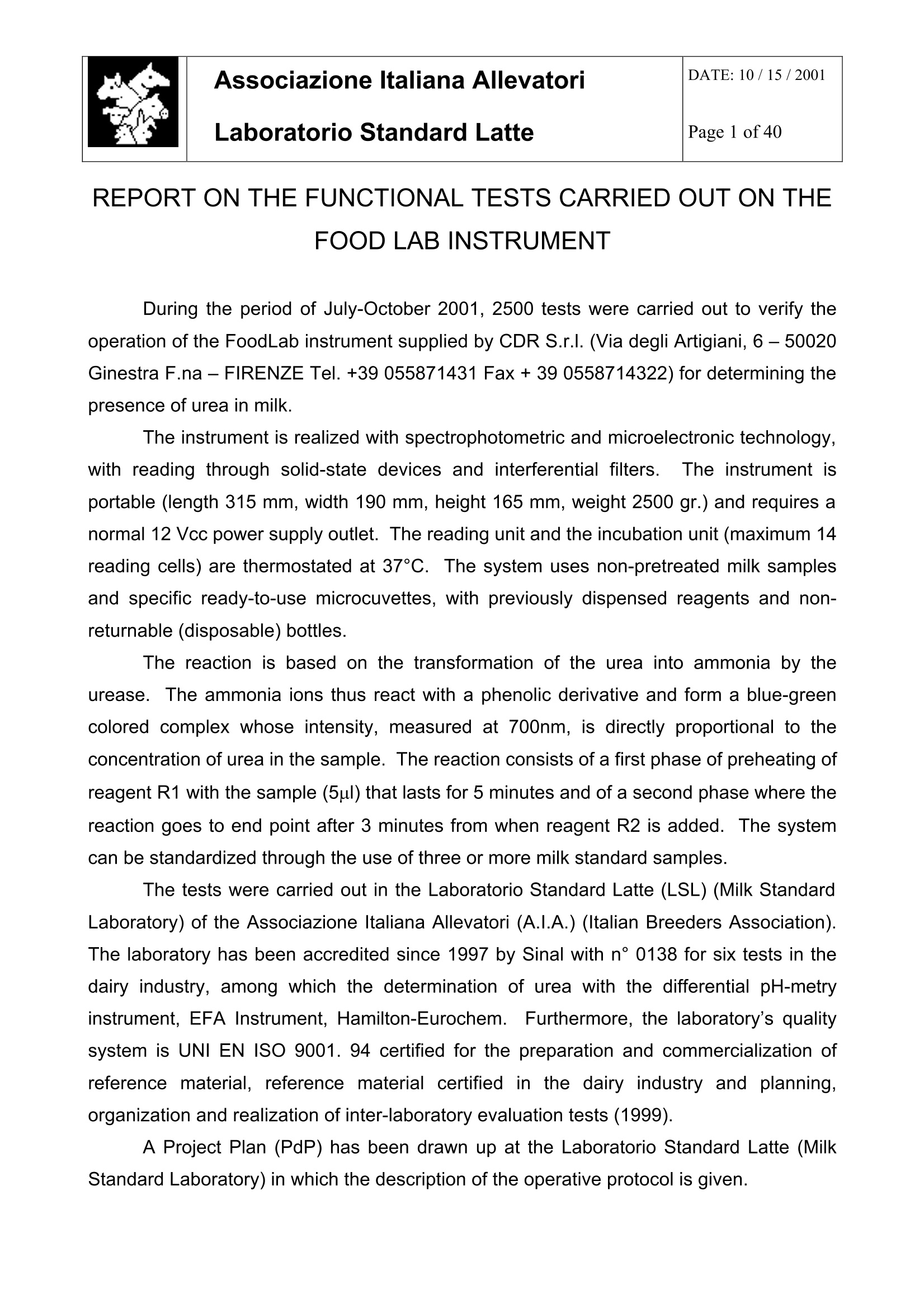
-
2/40
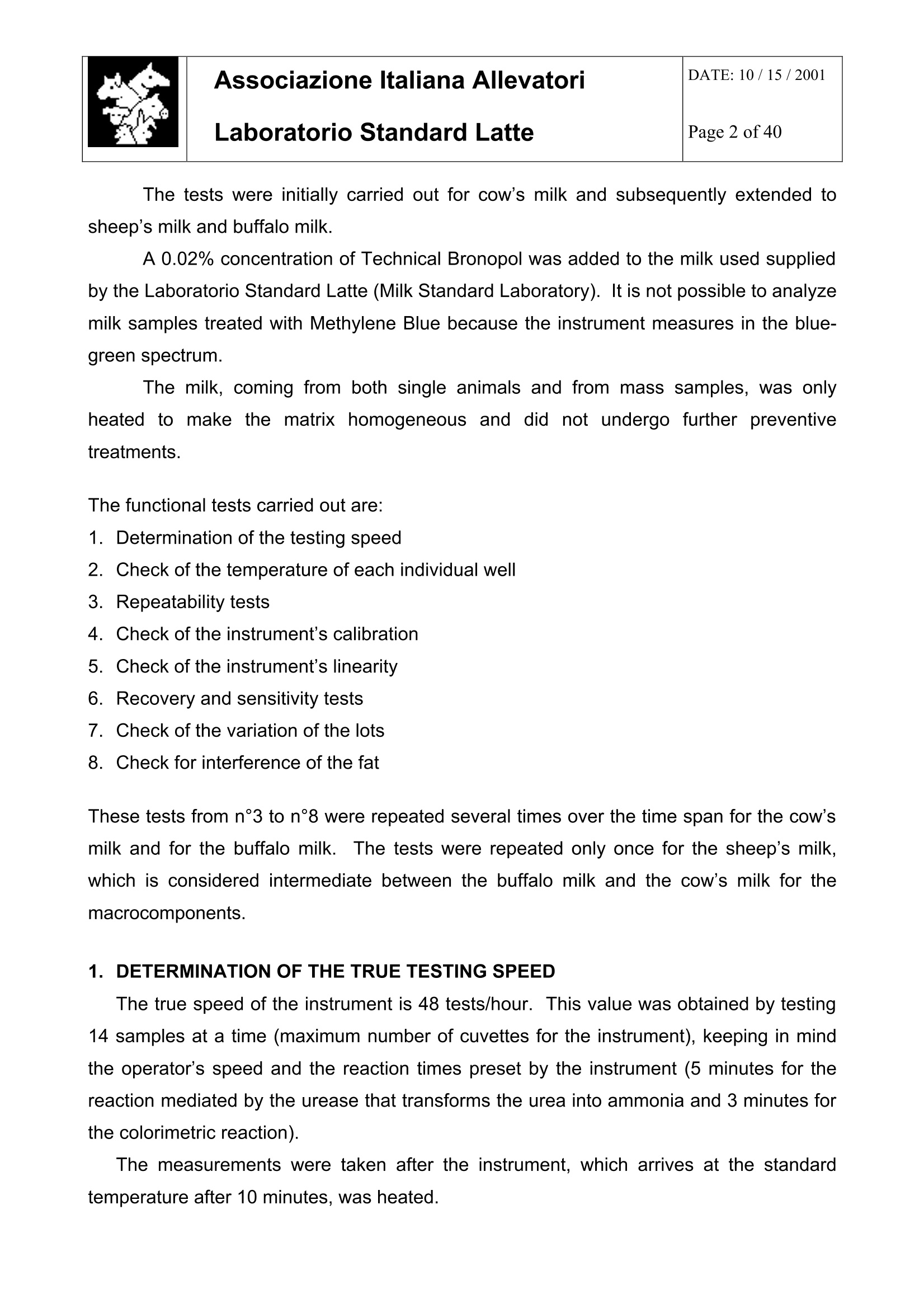
还剩38页未读,是否继续阅读?
继续免费阅读全文产品配置单
上海千慕生物科技有限公司为您提供《牛奶中尿素氮检测方案(牛奶分析仪)》,该方案主要用于液体乳中营养成分检测,参考标准《暂无》,《牛奶中尿素氮检测方案(牛奶分析仪)》用到的仪器有牛奶尿素氮速测仪(便携版)。
我要纠错
推荐专场
相关方案


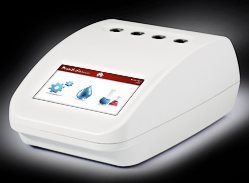
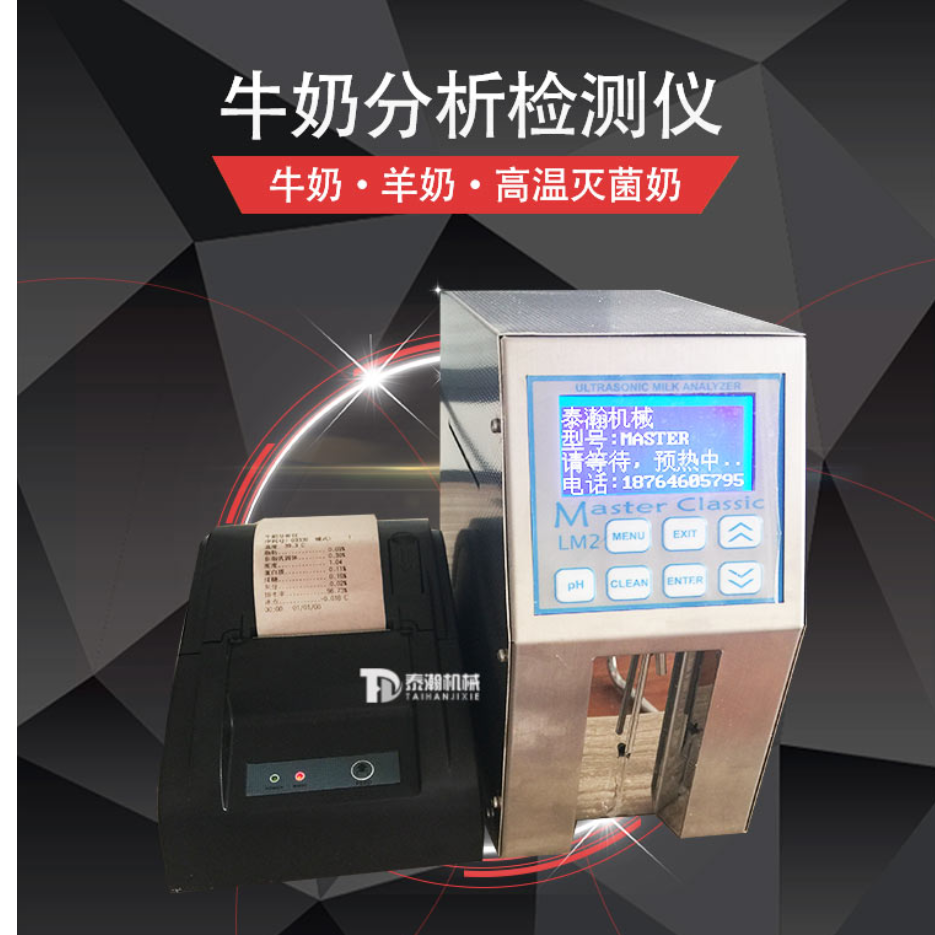

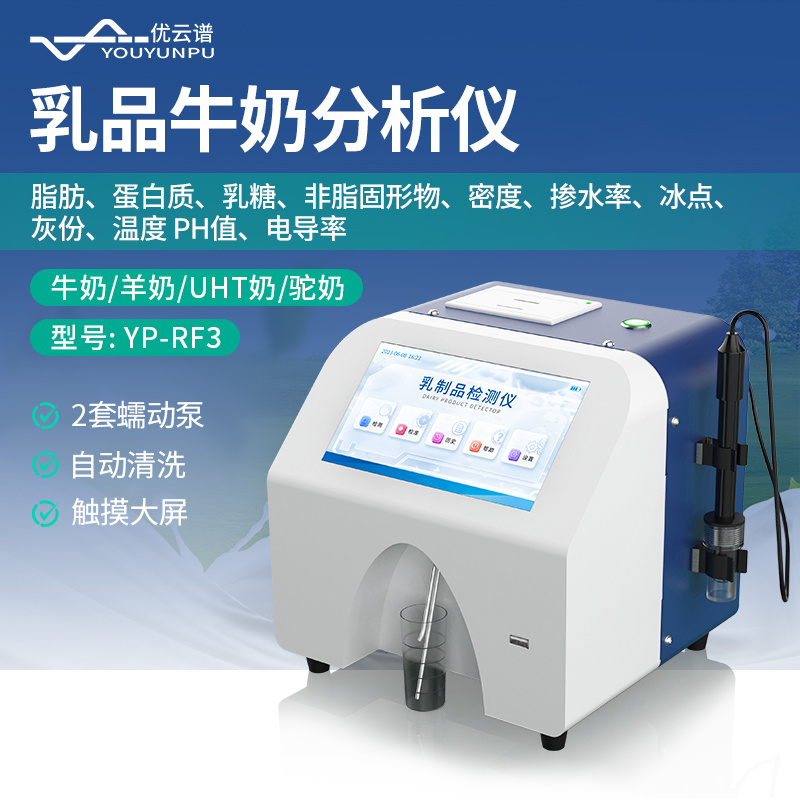
 咨询
咨询



